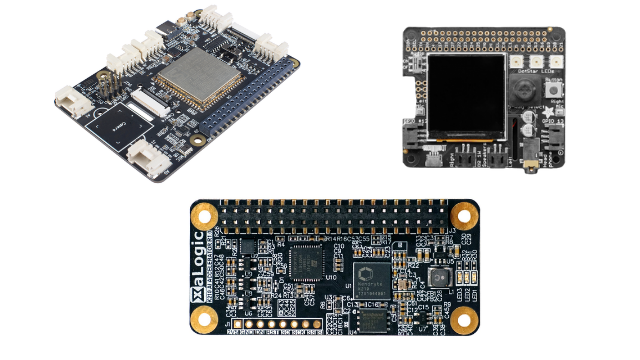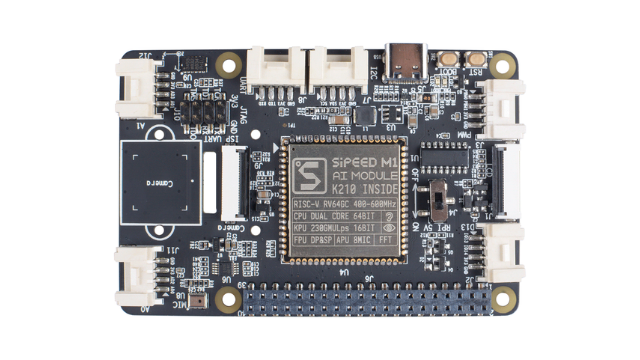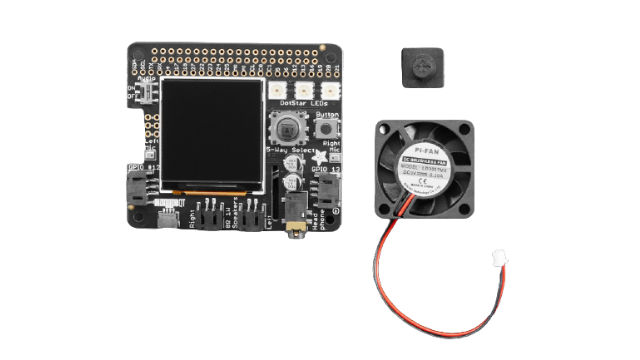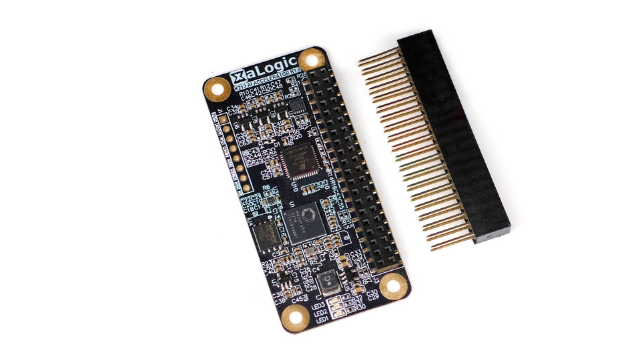Best Raspberry Pi HATs for AI Applications
Due to the increasing complexity of projects and the introduction of edge computing from cloud AI processing, the need for specialized hardware to sit on top of the general-purpose Raspberry Pi computers has significantly increased over the past few years. These HATs are designed for making the integration of add-on boards easier through the GPIO header pins and taking the power from the host processor board. Raspberry Pi saw the need to introduce a standard hardware specification that helps manufacturers and communities build their own add-on boards.

The maker community has seen a massive revolution through integrating RPi HATs for different applications. It made complex applications possible for every hacker out there. There are hundreds of HATs already available on the market that add functionalities like motors, various sensors, and fans. Even though Raspberry Pi Zero comes with a 40 GPIO pin header, due to the size and positioning, several HATs may not be compatible like the Raspberry Pi POE HAT.
In this article, we would be focusing on highlighting some of the very interesting Raspberry Pi HATs for your AI computing applications.
What is Raspberry Pi HAT?
In 2014, with a lot of anticipation around a standardized hardware expansion for all the Raspberry Pi single-board computers, the Raspberry Foundation announced the release of HATs. HATs, an acronym for ‘hardware attached on top’ are specially designed add-on boards for Raspberry Pi SBCs. Raspberry Pi HATs come with customized features that add to the capabilities of the existing single board computer. Without back-compatibility, the HATs were designed for RPi devices with 40-pin GPIO headers such as B+ and newer models.
These add-on boards are developed with a clear idea of the target application by following the HAT specifications. Many embedded electronic device manufacturers then started releasing their own hardware to aid the increasing demand for advanced applications. These HATs revolutionized the way Raspberry Pi applications are built by reducing the hardware complexity. We have seen this specialized hardware for building robotic, edge computing, automation, industrial-grade, and gaming projects. But not to miss, for a smaller form factor Raspberry Pi Zero, there are pHATs. Let us now take a look at the differences between HAT and pHAT.
Difference: HAT v/s pHAT (uHAT)
As guessed by most of you, Raspberry Pi HATs are built for 40-pin compatible Raspberry Pi single-board computers while pHAT is designed to aid the smaller form factor devices like Raspberry Pi Zero and the family. With the introduction of Zero which is half the size of Model A+ but adding twice the capability at a miniature size. When the hackers realized the potential of the tiny powerful device that Raspberry Pi brought to the markets, many manufacturers designed hardware to add more features. These pHATs are only compatible with the Raspberry Pi Zero family series.
Note: pHAT is not an official term like HAT. Hence you can find more details on HAT than pHAT on the Raspberry Pi Website.
Grove AI HAT
 One of the very famous Seeed Studio-designed Raspberry Pi HAT for edge computing, Grove AI HAT, built around the Sipeed MAIX M1 AI module integrated with Kendryte K210 processor. With the increasing requirements for TinyML, specialized AI accelerators are taking the lead. But to aid the general-purpose SBCs from Raspberry Pi, Grove AI HAT adds the functionalities of machine vision using deep learning. Providing up to 0.5 TOPs of processing power skips the tedious workflow of training your own neural network. The HAT offers a display and camera interface making it convenient for AI vision projects. For voice recognition applications, there is a high-quality microphone and for robotics, there is an onboard 3-axis accelerometer sensor.
One of the very famous Seeed Studio-designed Raspberry Pi HAT for edge computing, Grove AI HAT, built around the Sipeed MAIX M1 AI module integrated with Kendryte K210 processor. With the increasing requirements for TinyML, specialized AI accelerators are taking the lead. But to aid the general-purpose SBCs from Raspberry Pi, Grove AI HAT adds the functionalities of machine vision using deep learning. Providing up to 0.5 TOPs of processing power skips the tedious workflow of training your own neural network. The HAT offers a display and camera interface making it convenient for AI vision projects. For voice recognition applications, there is a high-quality microphone and for robotics, there is an onboard 3-axis accelerometer sensor.
Specifications of Grove AI HAT for Edge Computing
Processor: Sipeed MAIX-I module without Wi-Fi
Power: USB Type-C connector 1x USB 2.0 Device, Type C (for programming as well)
Grove Interface:1x Digital IO, 1x PWM, 1x I2C, 1x UART, 2x ADC
LEDs: 1x Power LED, 1x Boot LED
Buttons:1x Reset Button, 1x Boot Button
Display: 1x LCD Interface
Camera: 1x Camera Interface
Microphone: 1x Digital Mic
Sensor: 1x Accelerometers Sensor
Serial communication header: 1x JTAG & ISP UART Pin Header
Supply voltage: 5V
GPIOs: 2x 20 Pin Header with I2C, UART, SPI, I2S, PWM, GPIO
Adafruit Braincraft HAT
 The most expensive AI HAT on today’s list comes from Adafruit: Braincraft HAT for machine learning on RPi 4. The HAT comes with a 240x240 pixel TFT IPS display for inference output, slots for camera connector, 5-way joystick and a button for UI input. There also comes a microphone, headphone interface, speaker, and STEMMA connector for NeoPixels and servo motors. With all these functionalities, the user can build audio/video AI projects while also interfacing more external sensors for robotic applications. Designed with a mini fan attached at the bottom of the HAT keeps the host computer cool while doing AI inference calculations.
The most expensive AI HAT on today’s list comes from Adafruit: Braincraft HAT for machine learning on RPi 4. The HAT comes with a 240x240 pixel TFT IPS display for inference output, slots for camera connector, 5-way joystick and a button for UI input. There also comes a microphone, headphone interface, speaker, and STEMMA connector for NeoPixels and servo motors. With all these functionalities, the user can build audio/video AI projects while also interfacing more external sensors for robotic applications. Designed with a mini fan attached at the bottom of the HAT keeps the host computer cool while doing AI inference calculations.
Specifications of Adafruit Braincraft HAT
Type: Adafruit Braincraft HAT with Arm Cortex A72 processor core
Display: 1.54-inch IPS TFT display with 240x240 resolution
Audio: Stereo speaker ports for audio playback
Microphone: Stereo headphone out for audio playback
Connector: Two 3-pin JST STEMMA connectors
Interface: 5-Way Joystick and Button
LEDs: Three RGB DotStar LEDs
K210 AI Accelerator HAT
 Coming back to K210 powered AI HAT for your Raspberry Pi that successfully raised 2x donations through crowdfunding in the early last year. There are pre-trained AI models: customizable object detection and face detection for those who do not know to train their own model. Note that the hardware is designed for a smaller form factor of Raspberry Pi Zero and will require an extender to fit on 3B+ and 4B Raspberry Pi single-board computers.
Coming back to K210 powered AI HAT for your Raspberry Pi that successfully raised 2x donations through crowdfunding in the early last year. There are pre-trained AI models: customizable object detection and face detection for those who do not know to train their own model. Note that the hardware is designed for a smaller form factor of Raspberry Pi Zero and will require an extender to fit on 3B+ and 4B Raspberry Pi single-board computers.
Specifications of K210 AI Accelerator
System-on-chip: Kendryte K210 featuring 64-bit dual-core RISC-V processor with FPU
Cloud security chip: Infineon Trust-M
SPI Bridge: Lattice iCE40 FPGA
Power consumption: 0.3W
Final Thoughts on Raspberry Pi HATs for AI applications
There are many more Raspberry Pi HATs for AI projects, but these are a few of our favorites that can make your build process simpler. Through powerful AI capabilities and added functionalities to RPi single-board computers, the hacker can take advantage of this specialized hardware. Grove AI HAT still remains the best RPi HAT for AI projects in the market at being one of the cheapest HATs.
Your turn: Let us know which one is your favorite for AI inference in the comments below....















































Leave your feedback...